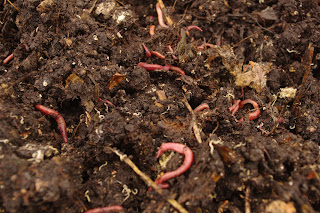Trench composting is a very simple way to improve soil fertility that's been practiced around the world across the ages: dig a trench (or hole), add organic matter e.g. fruit and veg "waste" and drag the soil back to fill it in. Traditionally it's a winter task to prepare the bed for spring.
It's particularly useful for hungry crops like runner beans. Next time I'm on the allotment I'll repeat the process with a parallel trench. In May I'll set up an A-frame type runner bean support along the length of the bed so that the plants root into the trenches.
I started by chucking in what was on the bed before I started digging; what looks like straw is the dried up stems of Nasturtiums.
I also chucked in some Leeks that hadn't amounted to much but the bulk was provided by a barrowful of household compost that had been accumulating in a big black plastic composter. Plastic bins have a tendency to become overmoist and the contents are difficult to turn over when full so the stuff I used was rather slimy and smelly but that won't matter in a trench.
I will write another post sometime concerning the differences about aerobic and anaerobic composting which is an important consideration for the compost connoisseur. Suffice to say this particular bin load was becoming anaerobic but then again trench composting is an anaerobic method.
So the idea of trench composting is to create this rich fertile seam which assimilates with the existing soil to improve soil structure and humus content...
And here's another benefit: lots of juicy worms!



